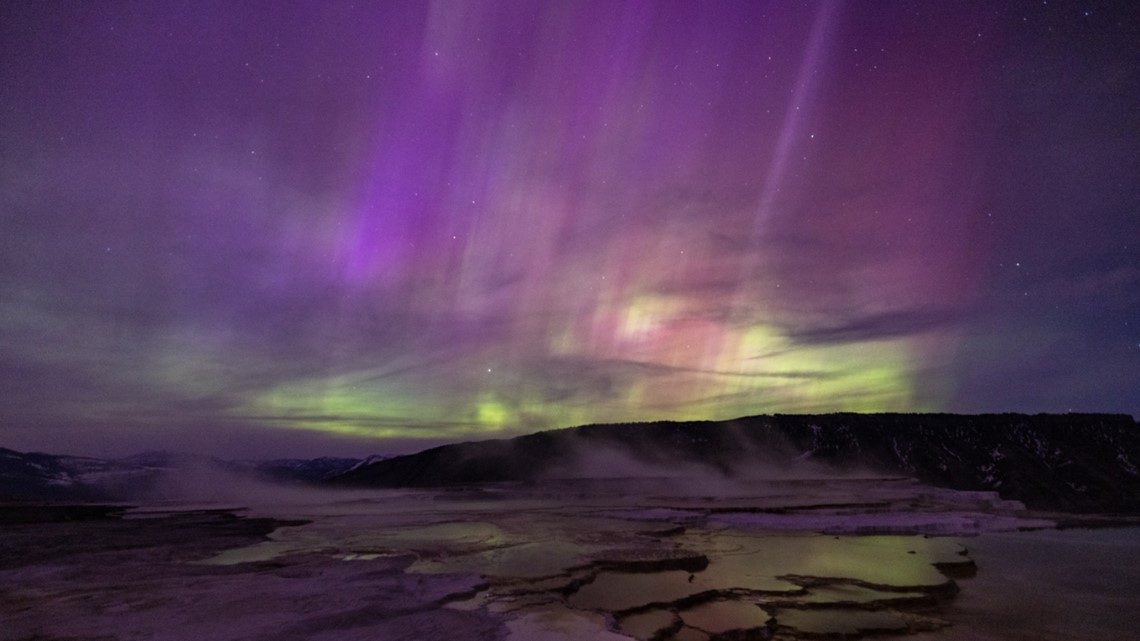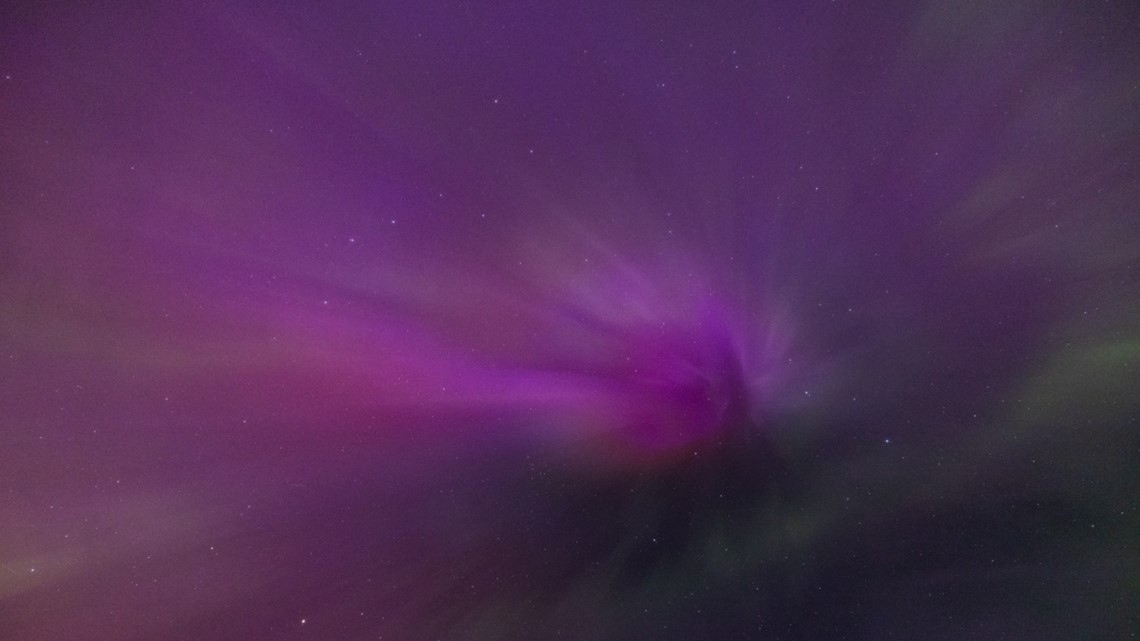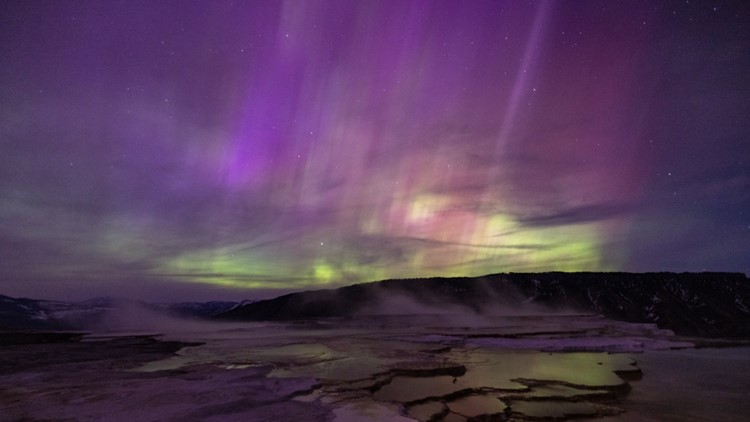YELLOWSTONE NATIONAL PARK, Wyo. — Photographers in 30 U.S. states captured images of the northern lights on Sunday night, but there's something unique about seeing the auroras over the spectacular scenery of Yellowstone National Park.
An intense solar storm hit the Earth on Sunday, causing the northern lights to be visible much farther south than usual. In the U.S., sky-gazers took in the sights from Colorado, California, New Mexico, Wisconsin and even Arizona — mostly a reddish glow instead of the typical green shimmer.
“I don't want any expectations of these green curtains moving back and forth” so far south, said Bill Murtagh, program coordinator at the NOAA Space Weather Prediction Center in Boulder.
In Yellowstone National Park, located in northern Wyoming, Montana and Idaho, the skies glowed purple and green.
"Pro tip: bring water when watching the northern lights," the park says on social media. "Your mouth tends to get dry when jaw is on the floor."




According to the park, the northern lights appear a few times a year in Yellowstone.
The aurora were caused by a blast of superhot material from the sun late last week that hurled scorching gases known as plasma toward Earth at nearly 2 million mph, the National Oceanic and Atmospheric Administration said Monday.
Although conditions have eased, auroras might still be visible as far south as South Dakota and Iowa late Monday and early Tuesday if skies are dark.
The farther north, the better the show as the energized particles interact with the atmosphere closer to Earth, according to Murtagh. The farther south, the curvature of the Earth cuts off the most dazzling scenes as the particles interact higher in the atmosphere.
Murtagh said light pollution in Boulder prevented him from seeing the auroras Sunday night. But there could be more opportunities as the solar cycle ramps up.
“Stay tuned, more to come,” he said.
This was the third severe geomagnetic storm since the current 11-year solar cycle began in 2019, according to NOAA. The agency expects the cycle to peak in 2024.
> Top stories from 9NEWS curated daily just for you! Sign up for the 9NEWSLETTER right now to get can’t-miss stories, Next and Broncos content, weather and more delivered right to your inbox.
More 9NEWS coverage of Yellowstone National Park:
SUGGESTED VIDEOS: Colorado Guide


